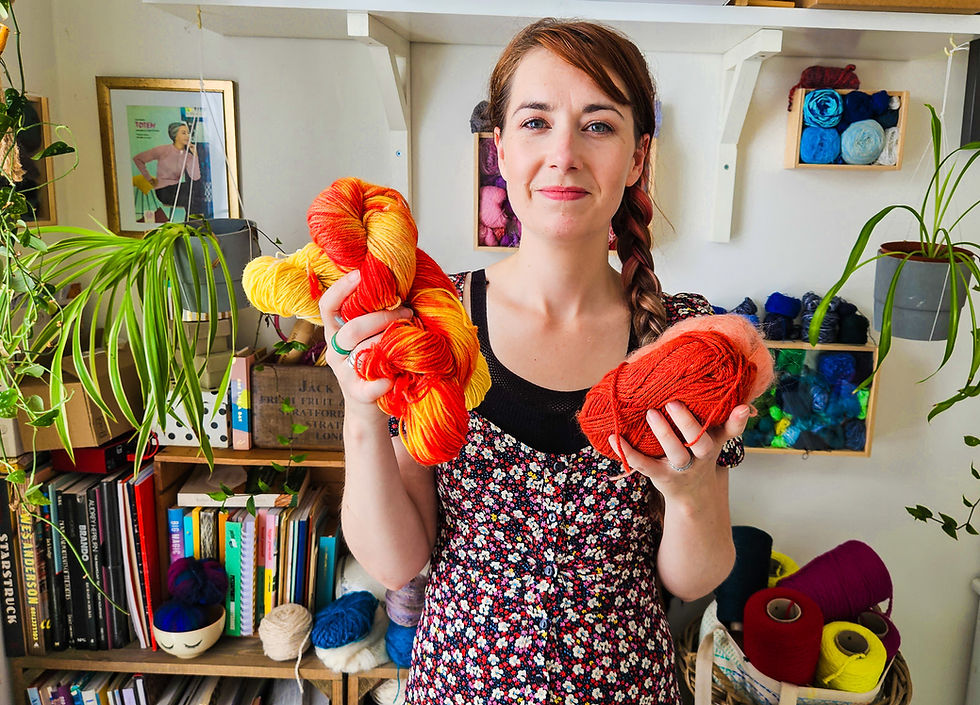Beginner Knitters: Yarn Weights Explained
- learntoknitonline

- Apr 21, 2021
- 2 min read
Updated: May 18, 2021
There are so many things to be confused about as a beginner knitter and not because the information is in itself technical or difficult but because there is so much new information to familiarise yourself with. My whole objective as a Knitting Teacher is to de-mystify and break it down so you feel a confident and happy knitter.

So today I am going to explain and demonstrate the different Knitting Yarn Weights - what I mean by that expression, is the different thicknesses (is that a word?) of yarn.
Going from 'thin to thick' yarn, I shall take you on a tour of all the variations of yarn weights, the category names they are known by, the knitting needles they use and the projects they are typically used to knit.
Sound like fun? Great, let's dive in!
And for those that like a little written breakdown, from thinnest yarn to thickest (bulkiest):

I always recommend learning to knit with DK weight yarn and therefore 4mm needles. My reasoning being it is the most 'middle weight' yarn and generally means that yarn on either side of the weight spectrum doesn't prove too intimidating to try once you are ready to explore. If you learn and get comfortable with DK yarn then Sock weight and 3mm needles don't feel too scary, equally Bulky or Aran and 5mm or 6mm knitting needles don't feel a massive leap in comfort levels.
Most knitters have a preferred weight yarn that they work with, it is either determined by the speed at which they like to get things made (thicker yarns = quicker knits) and finished, the techniques they like to use (such as Lace or Cables) or the type of things they like to make (baby clothes and chunky oversized jumpers being the most popular knitted ambitions for many of my Beginner Knitting students recently).
My personal preference varies and I like to mix it up. I am currently knitting a hat in Sock Weight Yarn and a cardigan in DK weight yarn. I also have a chunky blanket planned for a family member which due to the speed of the piece being needed will likely be with Bulky weight yarn.
PIN this post and keep it handy.

I hope this post helped you navigate yarn weights, should you have any questions or requests for another tips and tricks post or video have a look through my previous blog posts or let me know in the comments!
To be kept up to date with my new knitting classes, tips and tricks sign up to my newsletter, The Loop



Comentarios